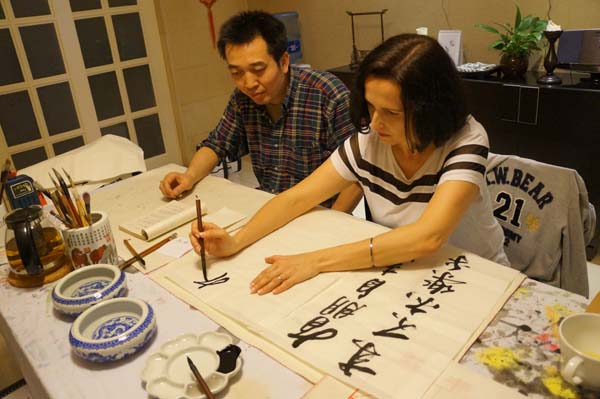 |
|
Czech graphic designer Jana Janeckova (R) writes calligraphy under the guidance of her teacher He Wenzheng, a contracted painter from Art Academy of Loong Artery Millennium (Longmai Qianxi). [Wu Jin/China.org.cn]
|
"She's really a quick learner," said He Wenzheng, a contracted painter from the Art Academy of Loong Artery Millennium (Longmai Qianxi).
A graphic designer herself, Janeckova explains how she has a good visual memory so it hasn't been too hard to remember the order of the strokes.
Starting to learn Chinese five times a week after her arrival in Beijing, Janeckova will soon take HSK 4 (Hanyu Shuiping Kaoshi 4 -- Level 4 Test for Chinese Proficiency). Already having a good command of other European languages such as English and German, Janeckova said learning Chinese is quite different from studying Western languages.
"If the European languages are two dimensional pictures, then the Chinese is a three dimensional one; there are no similarities between Czech and Chinese and we learn it like a new-born baby," said Janeckova.
Yet the Czech designer also discovered that there logic and rules are at play inside the hieroglyphic language. "Chinese says tomorrow as ‘mingtian,' a bright day with hope, and tomato as ‘xihongshi' (western red fruit)."
According to her, learning Chinese is not simply a matter of memorizing characters, but of remembering the history, stories, legends and culture beyond the written words.
"It was not until I read the book about Laozi did I realize I was a Taoist," she said.
According to Janeckova, as China is playing an increasingly important role in the international community in regard of its fast-growing economy, Europeans consider Chinese a valuable language.
We recommend:
